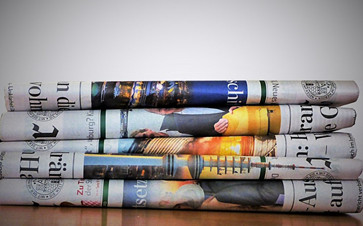Pioneers of Printing: Augustus Applegath
Time:2017-09-12 From:
Thanks to the development of his revolutionary his steam-powered flatbed press, Augustus Applegath is another inventor to add to our Pioneers of Printing list.

Imagine there was a time when it took both – a lot of time and manpower – to print newspapers. To be concrete, we are talking about the 19th century. With his steam-powered flatbed press, Augustus Applegath tried to change the situation and succeed in doing so. Thanks to his revolutionary machine, Applegath is another pioneer of printing to add to our list. Do you want to know which newspaper was printed on his press? Then keep on reading!
Who Was Augustus Applegath?Augustus Applegath was born in 1788 in the Parish of Stepney in East London. Until his death, he lived for over forty years in the Dartford district where he established a silk and calico printing company in 1843. During his life, Applegath registered eighteen different patents. This number perfectly illustrates that he is someone who can be called a prolific inventor. Besides improvements in letterpress and silk printing, he invented a new technique for printing banknotes and the machine upon which The Times newspaper was printed in the mid-19th century.
Counterfeited Banknotes Helped Applegath With His Breakthrough
Applegath’s career began when the Bank of England searched for ways of reducing the number of counterfeited banknotes. Together with Edward Cowper, his brother-in-law, he was granted money to develop their technique but the bank did not use it. Anyway, this did not prevent them from inventing new techniques and machines. Luckily, John Walter from The Times soon recognized their talent and engaged them to remedy defects in their previously used printing press. After they gained enough experience with repairing for presses, Applegath and Cowper finally decided to become manufacturers of printing machinery.
Equipped With New Features: Applegath’s Flatbed Printer
Due to increases in the size and circulation of The Times, Walter asked Applegath to build a faster press. Applegath’s invented machine replaced the flatbed printer that had been used at The Times for almost twenty years. The new model was not only capable of printing paper on both sides simultaneously; its rotary technique also improved The Time’s ability to print 4200 prints per hour.
Thanks to its huge success, Applegath press was also displayed at The Great Exhibition of 1851 in London. However, shortly thereafter, it was superseded by a more advanced horizontal rotary press developed by Richard Hoe.
News Source:Blog Drupa
Written By Drupa Redaktion

